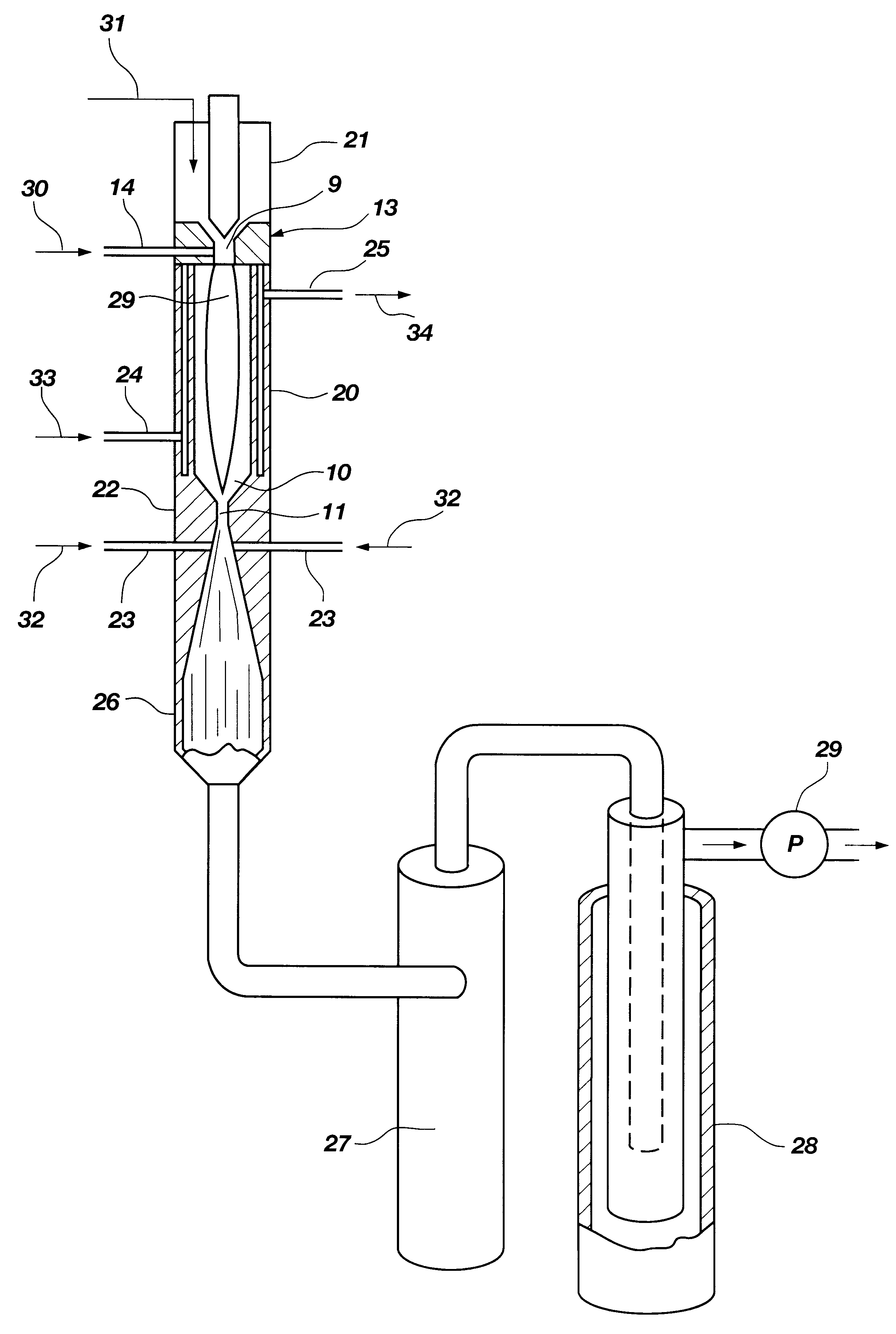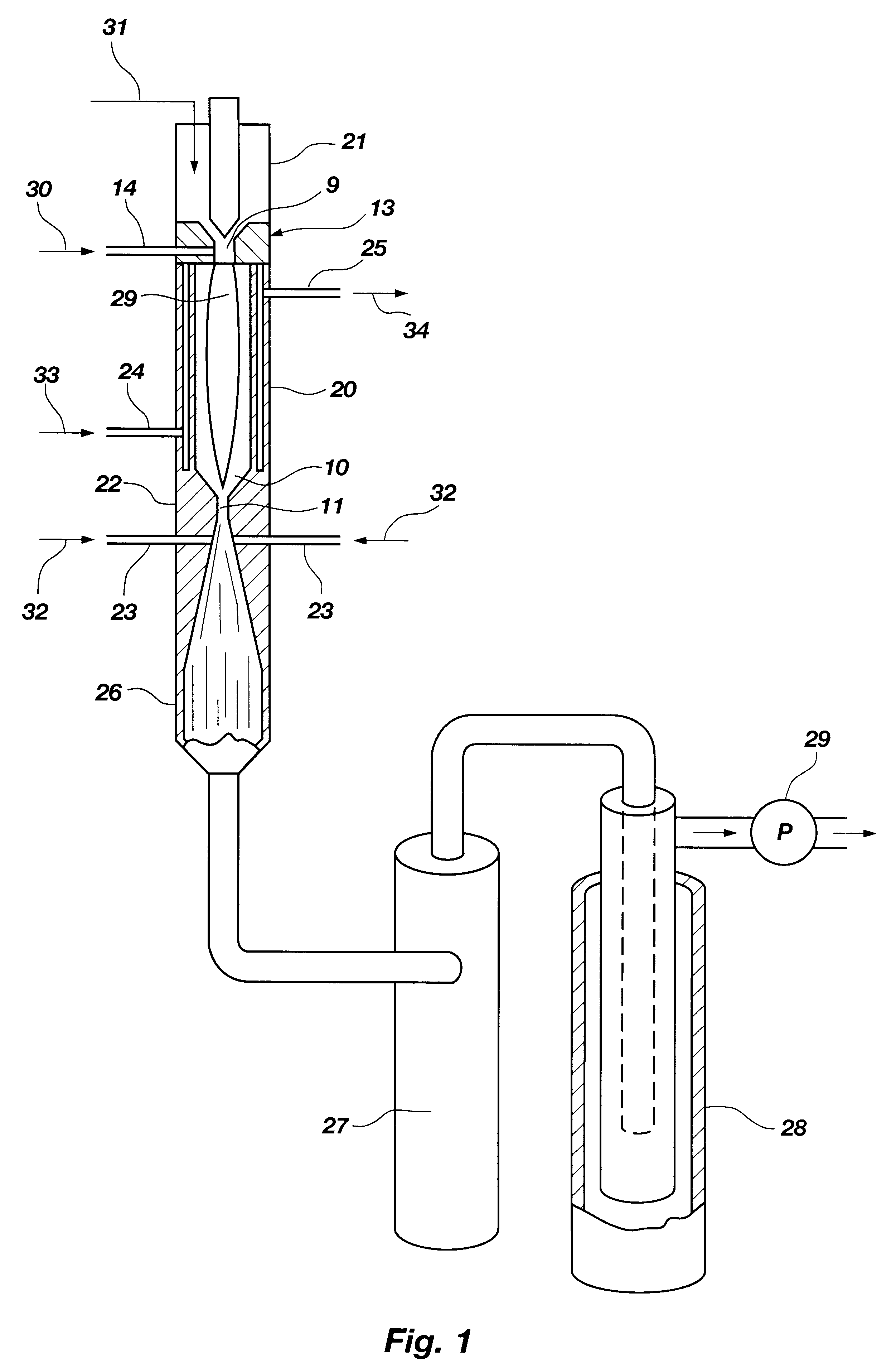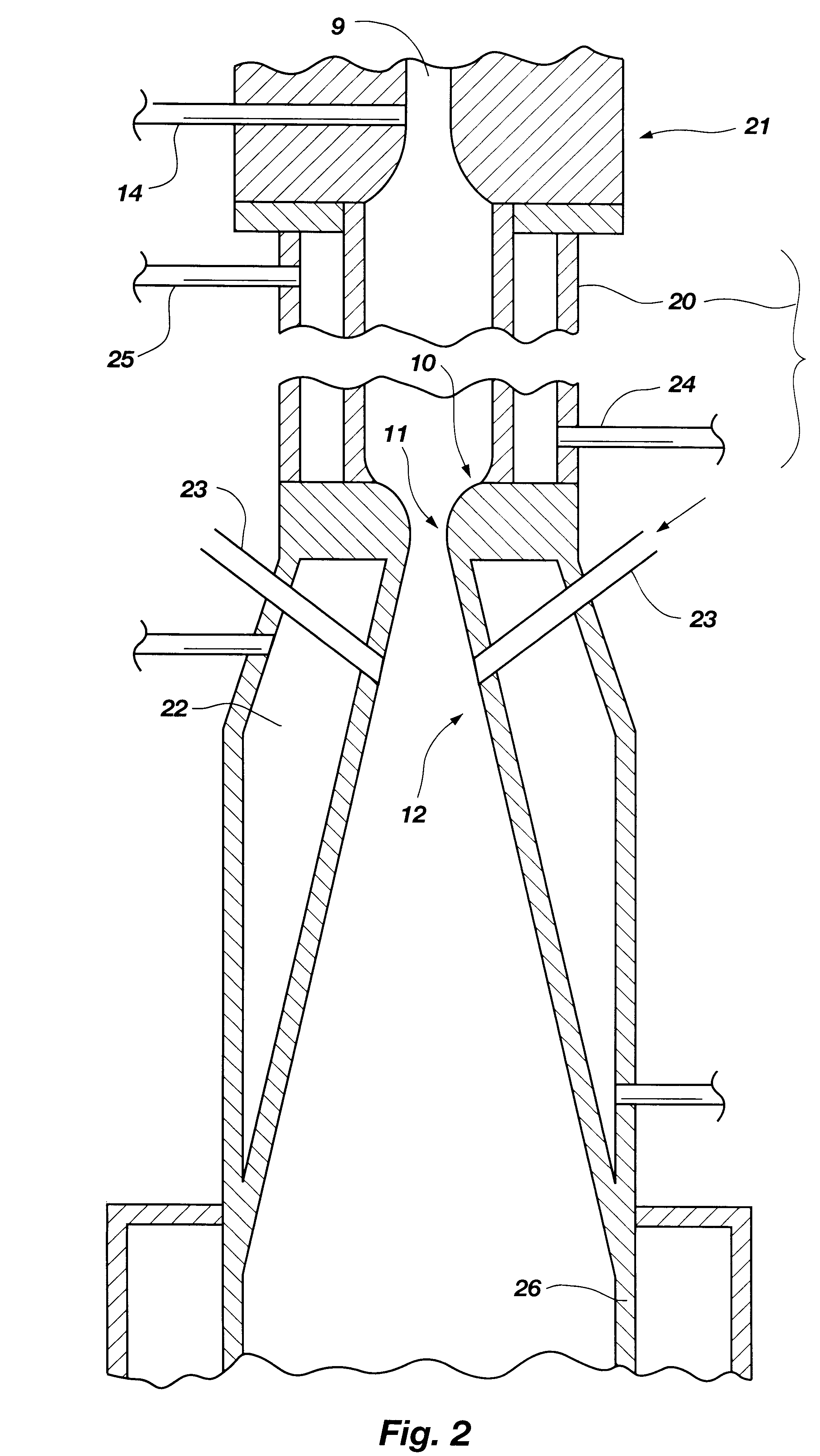Hydrogen and elemental carbon production from natural gas and other hydrocarbons
a technology of hydrocarbons and natural gas, which is applied in the direction of energy input, electric generators, organic chemistry, etc., can solve the problems of significant increase in production cost, unfavorable extraction and removal economics, and high total capital cost of a plant, so as to preserve high temperature equilibrium products and high quench rates
- Summary
- Abstract
- Description
- Claims
- Application Information
AI Technical Summary
Benefits of technology
Problems solved by technology
Method used
Image
Examples
Embodiment Construction
The inventive method for thermally converting one or more hydrocarbon reactants in a thermodynamically stable high temperature gaseous stream to at least one reaction product, comprises the following steps. The reactant stream is introduced at one axial end of a reactor chamber containing an ionized gas. The reactant stream is heated in the reactor chamber to form a diatomic hydrogen and acetylene reaction product stream. The reactor chamber has a predetermined length sufficient to effect heating of the methane reactant stream to a temperature at which diatomic hydrogen and acetylene are available as a major portion of a reaction product stream, at a location adjacent the outlet end of the reactor chamber. The reaction product stream is expanded through the outlet end of the reactor chamber to cool the gaseous stream by converting thermal energy to kinetic energy as the reaction product expands. During the expansion through either a nozzle or a free-expansion orifice, the reaction p...
PUM
 Login to View More
Login to View More Abstract
Description
Claims
Application Information
 Login to View More
Login to View More - R&D
- Intellectual Property
- Life Sciences
- Materials
- Tech Scout
- Unparalleled Data Quality
- Higher Quality Content
- 60% Fewer Hallucinations
Browse by: Latest US Patents, China's latest patents, Technical Efficacy Thesaurus, Application Domain, Technology Topic, Popular Technical Reports.
© 2025 PatSnap. All rights reserved.Legal|Privacy policy|Modern Slavery Act Transparency Statement|Sitemap|About US| Contact US: help@patsnap.com



